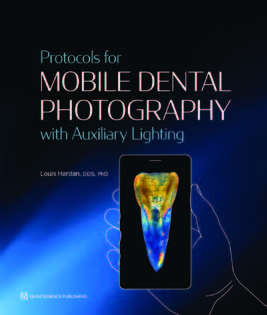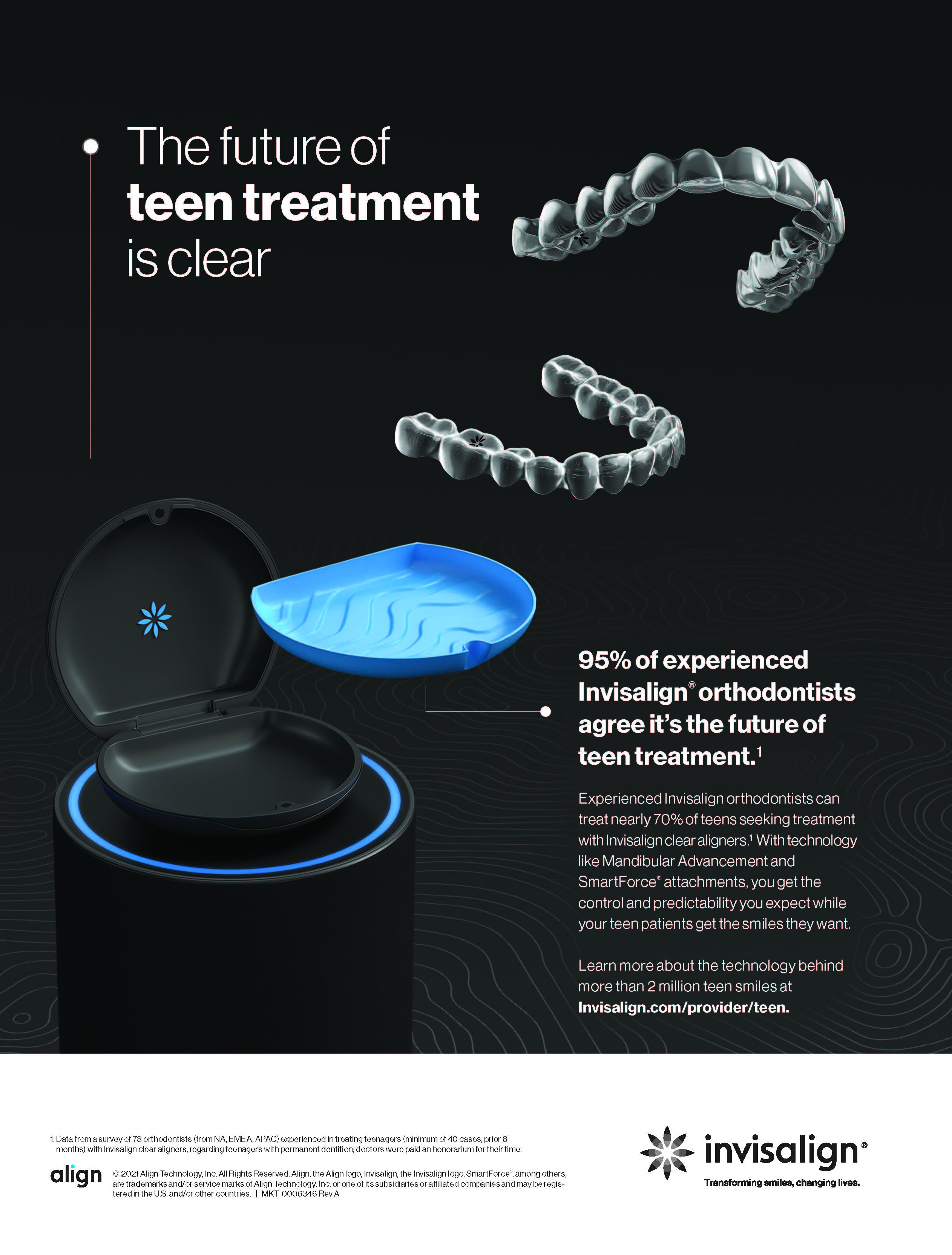BOOK REVIEWS
Protocols for Mobile Dental Photography with Auxiliary Lighting
LOUIS HARDAN, DDS, PhD
128 pages, 315 illustrations. $75. 2020.
Quintessence Publishing Co., Inc., 411 N. Raddant Road, Batavia, IL 60510.
(800) 621-0387; www.quintpub.com.
Dr. Louis Harden is to be congratulated on compiling a beautiful book that I hope will introduce the next generation of clinicians to the wonders of dental photography. His first chapter emphasizes the need for high-quality dental photographs—not only for treatment planning and communication with both the patient and the technician, but more important, as a method of effective self-evaluation, leading inevitably to self-improvement.
The second chapter outlines the benefits of mobile dental photography (MDP), which means swapping the traditional digital single-lens reflex (DSLR) camera system for the smartphone that almost everyone carries around. In chapter 3, the author argues that MDP not only offers a cost savings of thousands of dollars, but also avoids the weight issues of DSLRs (clearly, this is the wrong kind of “weight training”) and the steep learning curve needed to achieve good results with traditional camera systems. I do concede that in these post-COVID times, the ability to easily disinfect a camera will be considered a major advantage, and this is certainly more feasible with smartphones than with DSLRs.
Chapters 4 and 5 cover the specifications of smartphones and the accessories required to achieve high-quality photographs. Chapter 6, “Types of Light,” will be of interest to photography aficionados mainly as an introduction to Smile Lite MDP, which was originally developed for shade matching in restorative dentistry. Smile Lite is described as a smartphone “mini-studio” in which multiple light-emitting diodes can act as a ring flash, a twin flash, or both together. This device, which is compatible with any smartphone, can also accommodate diffusers and polarizers, depending on the effect required. The many exquisite photographs in this book demonstrate its potential.
Chapter 8 is perhaps the most important of all, since it provides practical advice on how to set up the white balance to imitate exact colors “in reality.” The old adage “no such thing as a free lunch” springs to mind, since there appears to be an equally steep learning curve required to ensure the quality of the final image, using a plethora of available apps to control various factors. The distance between the subject and the smartphone is addressed; again, excellent photographs demonstrate the distortions that can occur in both intra- and extraoral photographs when insufficient attention is paid to detail.
Chapters 9 and 10 supply many useful tips and tricks on how to maximize the quality of final images. Finally, chapter 11 discusses mobile dental video and how it can enhance communication among dentists, patients, technicians, and the community.
This book should inspire Millennials, using the tools they already own, to embrace the “art of the possible”—at least as far as dental photography is concerned. Anything that encourages self-reflection on the treatments they are performing almost certainly has to be a good thing. I can’t, however, see any of my orthodontic colleagues abandoning their tried-and-tested DSLRs any time soon. But five or 10 years from now—who knows?
JONATHAN SANDLER, BDS(Hons), MSc, PhD, MOrth RCS, FDS RCPS
Similar articles from the archive:
- BOOK REVIEWS Orthodontic Radiographs: Guidelines for the Use of Radiographs in Clinical Orthodontics; Periodontology; Sinonasal Complications of Dental Disease and Treatment June 2016
- BOOK REVIEWS Oral & Maxillofacial Radiology: A Diagnostic Approach; A Dental Office Checklist: Opening a New Dental or Dental Specialty Office August 2012
- BOOK REVIEW Global Diagnosis: A New Vision of Dental Diagnosis and Treatment Planning November 2016



